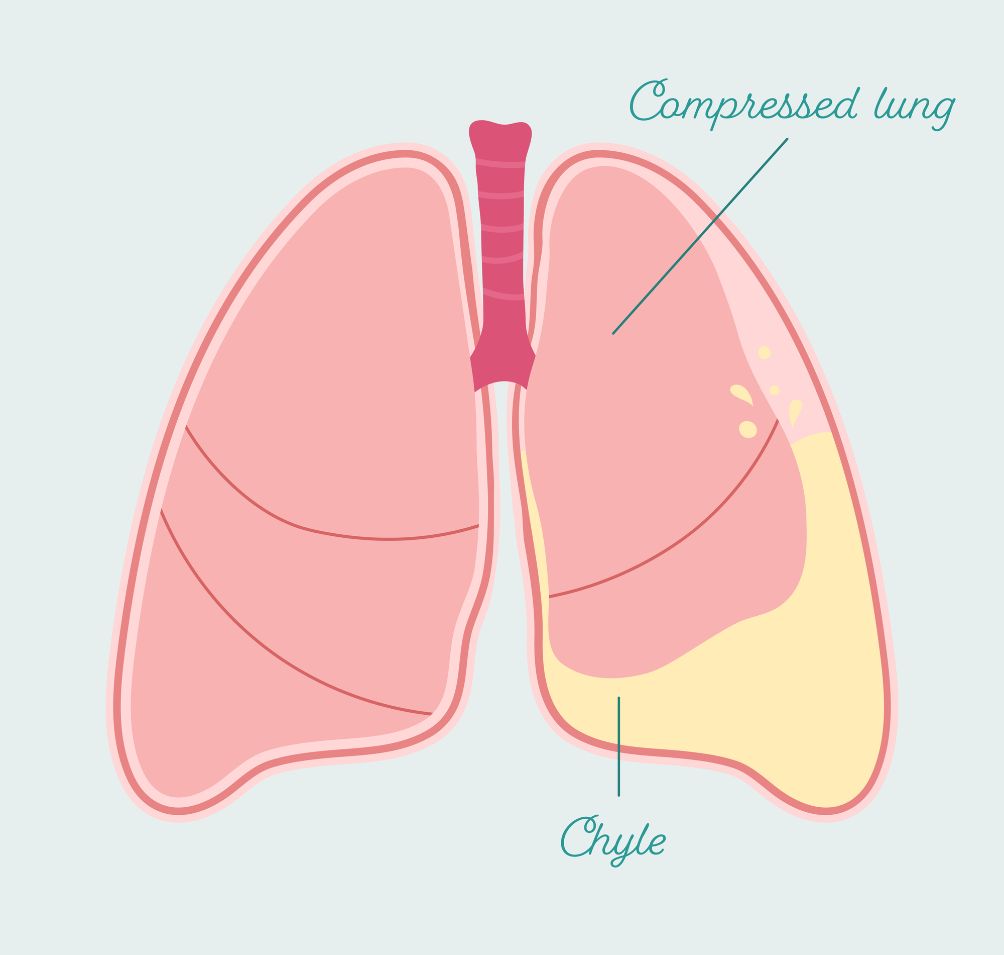Chylothorax symptoms occur when fluid builds up in the chest (pleural space). This buildup is caused by a blockage of chyle (lymph fluid) in the thoracic duct. Symptoms include trouble breathing, low blood pressure, weight loss, fatigue, and coughing. Some people also develop pleural effusions and pleural thickening or scarring.
A chylothorax can occur at any age. The most common cause is injury to the thoracic duct (TD) that leaks chyle from the lymphatic system into the pleural space. Other causes include damage to the thoracic duct due to trauma or surgery, such as placement of a central venous catheter. A thoracic duct can also become damaged from a disease of the lymphatic vessels, such as syphilis or tuberculosis.
Symptoms of a thoracic duct injury that causes a chylothorax include difficulty breathing and decreased lung sounds on exam. Patients may be able to breathe more easily by having fluid removed around the lungs, or they can get oxygen through a CPAP machine or a ventilator.
The first step in diagnosis is to look for a buildup of chyle on chest X-rays or ultrasound. The X-rays can show the buildup of fluid, but they cannot distinguish it from other types of pleural effusions. The doctor can order a CT scan if the X-ray shows fluid buildup.

Other imaging tests can help diagnose a chylothorax. These tests include a thoracentesis, which uses a long needle to remove fluid. The fluid can be tested to see if it is the right kind of chyle, and for the presence of cholesterol or triglyceride levels. The triglyceride levels are higher in milky-appearing chyle than in other kinds of fluid.
In a fetus, fluids can build up before birth and affect the baby’s lung development. In infants, fluids can block the flow of blood to the lungs and cause heart failure or breathing problems. When this happens, babies may be taken to the NICU (neonatal intensive care unit) to have tests and treatment for the fluids.
When there is a chyle leak in the lymphatic system, doctors use a test called an MR lymphangiogram to find out where it is. This allows them to see the leaking lymphatic fluid in real time, and can pinpoint the spot where it is coming from.
Medications can also be used to reduce the amount of chyle in the body, so that the fluid can heal. Some kids will need total parenteral nutrition (nutrition delivered through a vein), which makes the body produce less chyle. In other cases, surgery can be done to remove fluid from the thoracic duct and make the lymphatic system work better.
Non-traumatic chylothorax is more difficult to diagnose than traumatic chylothorax, because the gross appearance of the fluid is not sensitive or specific enough to detect a chyle cisterna. Moreover, the condition can be associated with a number of medical disorders, making it more challenging to identify its underlying cause.
Despite the difficulties in diagnosis and treatment, most thoracic duct damage that leads to chyle cisterna can be cured with surgical intervention. In fact, experts at CHOP have seen a high success rate with this type of chylothorax.









